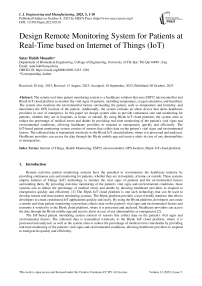Design Remote Monitoring System for Patients at Real-Time based on Internet of Things (IoT)
Автор: Satar Habib Mnaathr
Журнал: International Journal of Engineering and Manufacturing @ijem
Статья в выпуске: 5 vol.13, 2023 года.
Бесплатный доступ
The remote real-time patient monitoring system is a healthcare solution that uses ESP32 microcontroller and Blynk IoT cloud platform to monitor the vital signs of patients, including temperature, oxygen saturation, and heartbeat. The system also monitors the environmental factors surrounding the patient, such as temperature and humidity, and determines the GPS location of the patient. Additionally, the system includes an alarm device that alerts healthcare providers in case of emergency. In this paper we design system aims to provide continuous care and monitoring for patients, whether they are in hospitals, at home, or outside. By using Blynk IoT cloud platform, the system aims to reduce the percentage of medical errors and deaths by providing real-time monitoring of the patient's vital signs and environmental conditions, allowing healthcare providers to respond to emergencies quickly and efficiently. The IoT-based patient monitoring system consists of sensors that collect data on the patient's vital signs and environmental factors. The collected data is transmitted wirelessly to the Blynk IoT cloud platform, where it is processed and analyzed. Healthcare providers can access the data through the Blynk mobile app and receive alerts in case of any abnormalities or emergencies.
Internet of Things, Health Monitoring, ESP32 microcontroller, GPS location, Blynk IoT cloud platform
Короткий адрес: https://sciup.org/15018708
IDR: 15018708 | DOI: 10.5815/ijem.2023.05.01
Текст научной статьи Design Remote Monitoring System for Patients at Real-Time based on Internet of Things (IoT)
Remote real-time patient monitoring systems have the potential to revolutionize the healthcare industry by providing continuous care and monitoring for patients, whether they are in hospitals, at home, or outside. These systems employ Internet of Things (IoT) technology to monitor the vital signs of patients and the environmental factors surrounding them. By providing real-time monitoring of the patient's vital signs and environmental conditions, these systems aim to reduce the percentage of medical errors and deaths by allowing healthcare providers to respond to emergencies quickly and efficiently. [1] The Blynk IoT cloud platform is one such technology that can be used to develop remote real-time patient monitoring systems. The Blynk platform provides a user-friendly interface that allows developers to create customized IoT applications quickly and easily. By using the Blynk platform, developers can create a remote real-time patient monitoring system that collects data on the patient's vital signs and environmental factors and transmits it wirelessly to the Blynk cloud platform, where it is processed and analyzed. Healthcare providers can access the data through the Blynk mobile app and receive alerts in case of any abnormalities or emergencies.[2].
The IoT-based patient monitoring system consists of sensors that collect data on the patient's vital signs and environmental factors. The collected data is transmitted wirelessly to the Blynk IoT cloud platform, where it is processed and analyzed. as well as the system aims to reduce the percentage of medical errors and deaths by providing real-time monitoring of the patient's vital signs and environmental conditions, allowing healthcare providers to respond to emergencies quickly and efficiently.
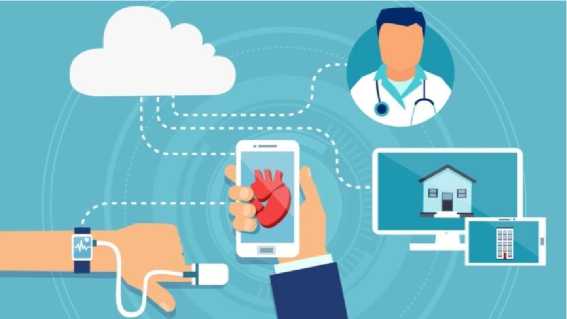
Fig. 1. Remote real-time patient monitoring
2. Study Background
The term Internet of Things or (IoT) is a generalization of the word "Internet" to all things. Just as there is a communication network between computers - the Internet - the IoT is a vast communication network between objects. A new ecosystem is emerging, as shown in the diagram below. According to the International Telecommunication Union, the Internet of Things (IoT) is "the global infrastructure of the information society, which provides advanced services by interconnecting objects (physical or virtual) using the Internet technology. “Interoperable existing or evolving Information and communication.” In fact, the definition of the Internet of Things is not static. It intersects the dimensions of the bulldozer concept and technology.
Conceptually, the Internet of Things represents physical objects connected through its own digital identity and can communicate with each other. The network builds a bridge between the physical world and the virtual world. From a technical point of view, the Internet of Things consists of a direct and standardized digital identification (IP address, smtp, http protocol, etc.) of physical objects using wireless communication systems that can be fleas. RFID, Bluetooth, or Wi-Fi.
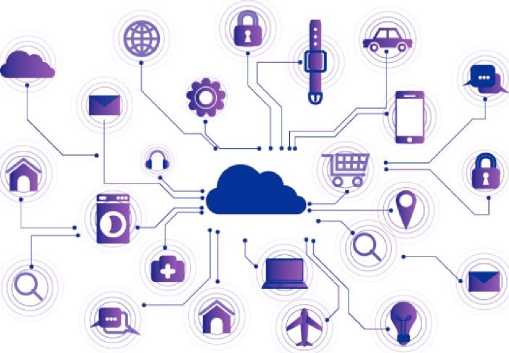
Fig. 2. IoT objects
Each remotely controllable object has its own identifier, which makes it unique and identifiable, in most cases an IP address. It is this digital identification number that allows the object to be found and to issue instructions from the computer or mobile phone. Figure 1.3 Example for Smart wearable show who the IoT work.
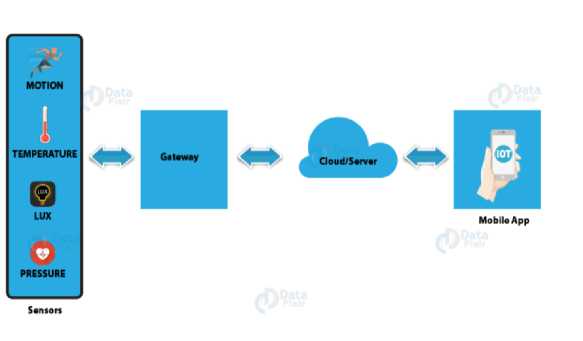
Fig. 3. Example for Smart wearable show who the IoT work.
3. Problem Statements and Objectives of Research
Based on the urgent need in society and the health sector and the large number of critical cases that are difficult to reach in a timely manner, the research objectives were determined. Thus, The problem statement it is the need for continuous and real-time monitoring of the vital signs and environmental conditions of patients in hospitals, at home, or outside. Traditional monitoring systems have limitations, such as requiring patients to stay in a specific location or requiring frequent visits from healthcare providers. These limitations can result in medical errors, delayed responses to emergencies, and increased healthcare costs. So that, the objectives of the remote real-time patient monitoring system are:
-
1) To provide continuous care and monitoring for patients, whether they are in hospitals, at home, or outside.
-
2) To monitor the vital signs of patients, including temperature, oxygen saturation, and heartbeat, as well as
environmental factors such as temperature and humidity, and determine the GPS location of the patient.
3) To reduce the percentage of medical errors and deaths by providing real-time monitoring of the patient's vital signs and environmental conditions, allowing healthcare providers to respond to emergencies quickly and efficiently.
4) To collect data on the patient's vital signs and environmental factors using sensors and transmit it wirelessly to the Blynk IoT cloud platform for processing and analysis.
5) To enable healthcare providers to access the data through the Blynk mobile app and receive alerts in case of any abnormalities or emergencies.
4. Scope of Study
5. ICT in Health Care
6. Methodology
Implement and evaluate an IoT-based patient monitoring system using ESP32 microcontroller and Blynk IoT cloud platform. The system aims to monitor the vital signs and environmental factors of patients, including temperature, oxygen saturation, heartbeat, humidity, and GPS location, in real-time. The system also includes an alarm device that alerts healthcare providers in case of emergencies. The research focuses on developing a reliable and efficient system that can be used to provide continuous care and monitoring for patients in hospitals, at home, or outside. The scope also includes evaluating the performance of the system in terms of accuracy, reliability, and response time, as well as assessing its impact on reducing medical errors and improving patient outcomes.
Due to the historical aging population, as well as the population suffering from chronic diseases, particularly the elderly, there is a significant challenge to human well-being and public healthcare systems [4] the demand for healthcare resources and services is increasing, implying the importance of using ICT to reduce shortages and deficiencies in daily healthcare activities. ICT plays a significant role in healthcare management by enabling and assisting in curing, caring for, and preventing disease [5]. Its adoption is also motivated by the need to transform and improve healthcare service delivery and communication, thereby improving quality, information flow, decision-making process, and productivity for healthcare professionals [6]. The use of ICT in healthcare is inspiring a number of researchers and developers to delve deeper into this expanding field. According to [7], there is evidence that the use of ICT in healthcare plays a significant role in decreasing healthcare errors while increasing the use of technology-based healthcare.
Electronic medical and health records (EMRs/EHRs), tele monitoring systems, patient personal health records (PHRs), and other types of ICTs are used in the healthcare sector to support needs [8]. Similarly, the healthcare sector includes a variety of healthcare professionals with varying roles and routines, but they all share the same goal: to treat and care for patients. The role of ICT in healthcare is to support these routines and assist healthcare professionals in achieving their goals. On the other hand, information and communication technology (ICT) has empowered patients to take responsibility for their own health and quality of life, resulting in improved communication and participation with healthcare professionals in the prevention and treatment processes. Among many technological advancements, healthcare professionals adopted electronic patient records, which facilitated clinical data recording. It has increased the complexity of the records in terms of ethical, legal, and patient record accuracy [9-14].
The methodology for this research involves the identification of the requirements and specifications for the remote real-time patient monitoring system, which includes the selection of appropriate sensors and devices such as the ESP32 microcontroller and Blynk IoT cloud platform. The next step involves the design and development of the IoT-based patient monitoring system, including the integration of sensors, microcontroller, and cloud platform. Testing and evaluation of the system will be conducted in real-world scenarios to ensure its reliability, accuracy, and effectiveness in monitoring patient vital signs and environmental conditions. The collected data will be analyzed and interpreted to identify any abnormalities or emergencies and generate alerts for healthcare providers. The system's ability to reduce medical errors and deaths will be validated by providing real-time monitoring and quick response to emergencies. Finally, the research findings will be documented and reported, along with recommendations for future improvements or developments of the system.
-
1) Hardware
-
• ESP32 microcontroller
-
• MAX30100 Pulse Oximeter Sensor.
-
• DHT11 humidity and temperature sensor.
-
• Buzzer.
-
• NTC Temperature sensor.
-
• 0.96-inch OLED screen display.
-
• NEO-M8 GPS module.
-
• 3.7 V, 1100 mAh Li-ion battery.
-
-
2) Software
• Arduino IDE. ( https://www.arduino.cc ).
• Blynk IoT platform ( https://blynk.cloud).
7. Blynk IoT Cloud Platform
8. Block diagram and System Architecture
With Blynk, you can create smartphone applications that allow you to easily interact with microcontrollers or even full computers such as the Raspberry main focus of the Blynk platform is to make it super-easy to develop the mobile phone application. As you will see in this course, developing a mobile app that can talk to your Arduino is as easy as dragging a widget and configuring a pin. With Blynk, you can control an LED or a motor from your mobile phone with literally zero programming. This is actually the first experiment that I will demonstrate in this course. But don’t let this simplicity make you think that Blynk is only useful for trivial applications. Blynk is a robust and scalable tool that is used by hobbyists and the industry alike. You can use it to monitor the soil humidity of your vegetable garden and turn on the water, or open up your garage door, with your can also use it to control smart furniture that can learn from your routines, or embed IoT and AI to traditional industrial products such as a boiler, or for improving the integrity and safety of oilfields. Blynk is free to use for personal use and prototyping. Their business model generates profits by selling subscriptions to businesses that want to publish Blynk-powered apps for their hardware products or services.

Fig. 4. Blynk IoT Cloud Platform Dashboard
A block diagram is a graphical representation of the system's components and their connections. The block diagram for the remote real-time patient monitoring system. The sensors block consists of various sensors that collect data on the patient's vital signs, such as temperature, oxygen saturation, and heartbeat, as well as environmental factors, including temperature, humidity, and GPS location. The microcontroller block represents the ESP32 microcontroller that integrates the sensor data and transmits it wirelessly to the Blynk IoT cloud platform. The Blynk IoT cloud platform block represents the cloud platform that receives the sensor data, processes and analyzes it, and generates alerts for healthcare providers in case of any abnormalities or emergencies. The block diagram provides a high-level overview of the system's components and their interactions, allowing for a better understanding of the system's architecture and functionality.
Blynk application For monitoring data
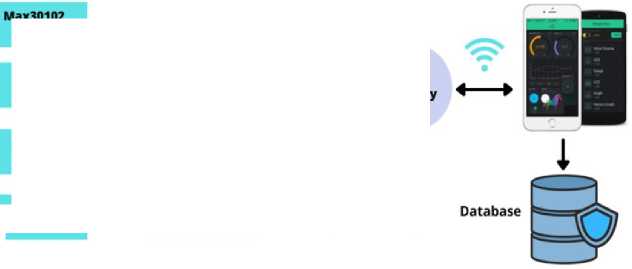
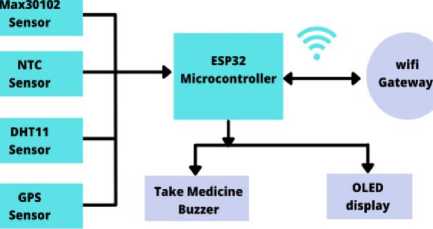
Fig. 5. Shows the block diagram of the proposal system
9. System Flow Chart
The flow chart for the remote real-time patient monitoring system includes several steps. First, the system begins with the collection of data from the sensors, which monitor the patient's vital signs and environmental conditions. This data is then transmitted wirelessly to the ESP32 microcontroller, which processes the information and sends it to the Blynk IoT cloud platform. In the second step, the Blynk IoT cloud platform receives the data and analyzes it in real-time, generating alerts for healthcare providers if there are any abnormalities or emergencies. The healthcare providers can access this data through the Blynk mobile app, which allows them to monitor the patient's vital signs and environmental conditions in real-time. In the third step, the system includes an alarm device that alerts healthcare providers in case of emergency. This allows for quick and efficient responses to emergencies, ensuring that the patient receives timely care.

Fig. 6. flow chart for system
10. Schematic Diagram
A schematic diagram is a visual representation of the components and connections of an electronic circuit. In the case of the remote real-time patient monitoring system, the schematic diagram would illustrate the components involved in the system, such as the ESP32 microcontroller, sensors, and alarm device. It would also show the connections between these components, such as the wiring between the sensors and the microcontroller, and between the microcontroller and the Blynk IoT cloud platform.
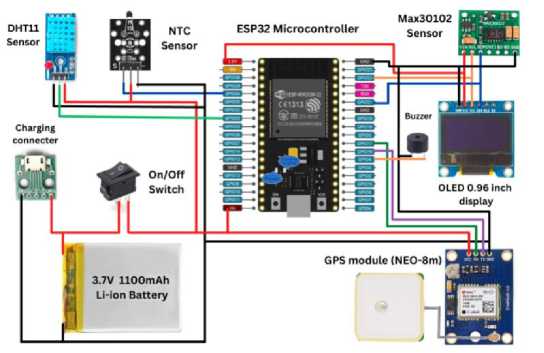
Fig. 7. System schematic Diagram
11. Prototype Setup
First: As shown in the figure below, at first, we design the bracelet using 3D printing and gathering all design components.
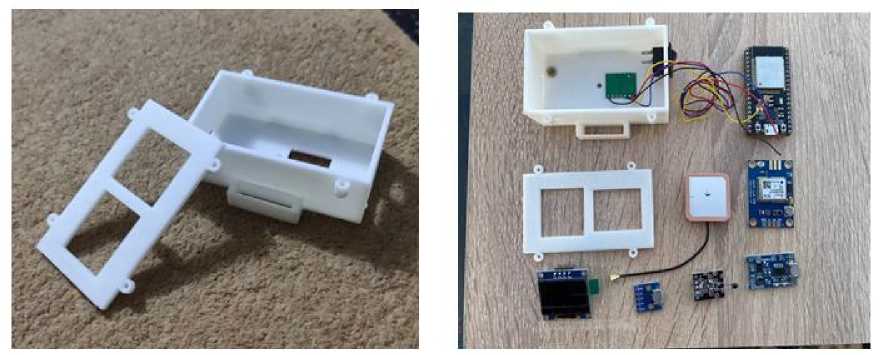
Fig. 8. Bracelet design using 3D printing and design components.
Second: As shown in the figure below, we connect started to connected all sensor and components with ESP32 microcontroller according to the previous scheme, and in this case, this sensor is ready to send the signal to the microcontroller.
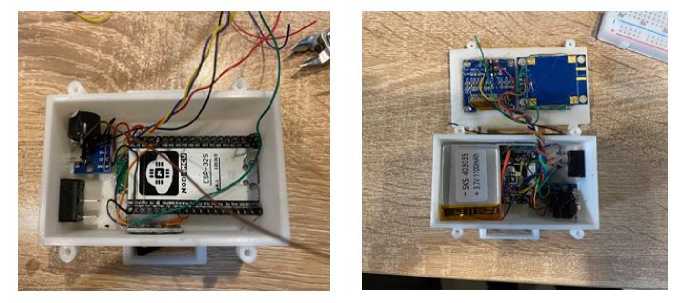
Fig. 9. Connect all design components
Result : The final design of the design involved installing the components in their appropriate locations, along with adding some miniature pieces that enhance the appearance of the bracelet.
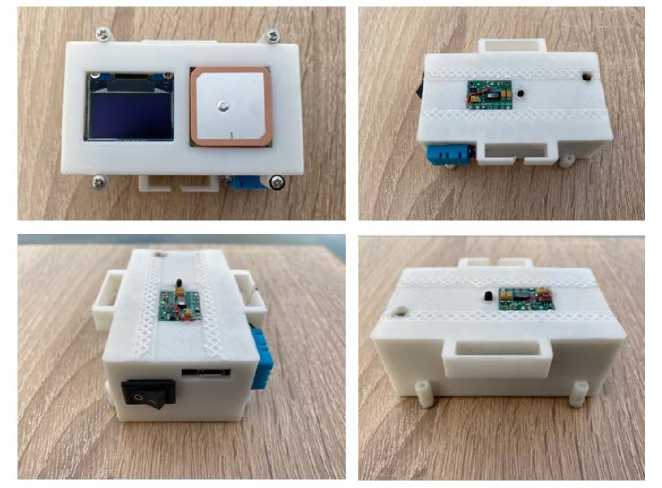
Fig. 10. Final design overview
12. Results and Validate the New Proposed System
The design has been successfully powered up and tested, and its dedicated interface on the mobile application displays the components that make up the sensor section, as well as the parts used to monitoring data from device. Fig.11.

Fig. 11. Enable device and validate
Table 1. Readings and results for several patients
|
Name |
Heart Rat |
SpO2 |
Body Temperature |
Room Tempe & Humidity |
|
Salih |
98 |
98 |
36 |
29 / 60 |
|
Noorhan |
70 |
92 |
37 |
30 / 55 |
|
Dhurgham |
66 |
89 |
36 |
28 / 70 |
|
Patient 4 |
86 |
81 |
36 |
32 / 60 |
|
Patient 5 |
105 |
86 |
37 |
33 / 50 |
|
Patient 6 |
60 |
83 |
37 |
25 / 40 |
|
Patient 7 |
89 |
98 |
36 |
24 / 45 |
|
Patient 8 |
92 |
91 |
37 |
26 / 42 |
|
Patient 9 |
55 |
97 |
37 |
27 / 44 |
We show in this table several readings and results for several patients, and these results are calculated by extracting the average value of the results. There is also an error rate caused by the sensor not making contact with the body correctly or in different positions but calculated from several readings, even though the device displays an average value.
13. Test objectives: Time Taken to Send Data to Cloud
Table 2. Time taken to send data to cloud
|
Test condition |
Output specification |
Optimal |
|
Time taken to send data To cloud |
Microcontroller send data to cloud every 5 second to Blynk data base. |
True |
14. Test objectives: Time Taken to Fetch Data from Sensor to Microcontroller
Table 3. Time taken to fetch data from sensor to microcontroller
|
Test condition |
Output specification |
Optimal |
|
Time taken to send data From sensor to microcontroller |
sensors send data to microcontroller < 40 ms |
True |
15. Conclusion
The main objective of the system is to provide continuous care and monitoring for patients, whether they are in hospitals, at home, or outside. By using Blynk IoT cloud platform, the system aims to reduce the percentage of medical errors and deaths by providing real-time monitoring of the patient's vital signs and environmental conditions, allowing healthcare providers to respond to emergencies quickly and efficiently. So that, the remote real-time patient monitoring system offers an efficient and reliable healthcare solution that enables continuous care and monitoring of patients. The system uses ESP32 microcontroller and Blynk IoT cloud platform to collect and process data on the patient's vital signs and environmental factors, including temperature, humidity, oxygen saturation, heartbeat, and GPS location. The system also includes an alarm device that alerts healthcare providers in case of emergency. By providing real-time monitoring of the patient's vital signs and environmental conditions, the system aims to reduce medical errors and deaths and allow healthcare providers to respond quickly and efficiently to emergencies. Overall, the remote patient monitoring system has the potential to enhance the quality of healthcare services and improve patient outcomes. Finally this study can extend in Future work to include Integration with other healthcare systems. The remote real-time patient monitoring system can be integrated with other healthcare systems such as electronic health records (EHRs) and telemedicine platforms [15]. This would allow healthcare providers to access patient data more efficiently and provide better coordinated care. As well Artificial intelligence and machine learning. The collected data can be used to develop artificial intelligence and machine learning models that can predict adverse events and suggest interventions to prevent them. This can help healthcare providers to be more proactive in their care and improve patient outcomes.
Acknowledgments
The author wish to thank the Department of Biomedical Engineering, at Engineering College, University of Thi-Qar and health institutions in Al- Nassirya City for their support.
Список литературы Design Remote Monitoring System for Patients at Real-Time based on Internet of Things (IoT)
- Bhuiyan, M. N., Billah, M. M., Bhuiyan, F., Bhuiyan, M. A. R., Hasan, N., Rahman, M. M., ... & Niu, M. (2022). Design and implementation of a feasible model for the IoT based ubiquitous healthcare monitoring system for rural and urban areas. IEEE Access, 10, 91984-91997.
- Abdulmalek, S., Nasir, A., Jabbar, W. A., Almuhaya, M. A., Bairagi, A. K., Khan, M. A. M., & Kee, S. H. (2022, October). IoT-based healthcare-monitoring system towards improving quality of life: A review. In Healthcare (Vol. 10, No. 10, p. 1993). MDPI.
- Chopade, S. S., Gupta, H. P., & Dutta, T. (2023). Survey on Sensors and Smart Devices for IoT Enabled Intelligent Healthcare System. Wireless Personal Communications, 1-39.
- Chu, K. H., Tung, H. H., Clinciu, D. L., Hsu, H. I., Wu, Y. C., Hsu, C. I., ... & Pan, S. J. (2022). A preliminary study on self-healing and self-health management in older adults: Perspectives from healthcare professionals and older adults in Taiwan. Gerontology and Geriatric Medicine, 8, 23337214221077788.
- White, J. J. (2023). Developing a Diagnostic Approach to Multi-Dimensional Poverty (Doctoral dissertation, University of Toronto (Canada)).
- Janakiraman, R., Park, E., M. Demirezen, E., & Kumar, S. (2023). The effects of health information exchange access on healthcare quality and efficiency: An empirical investigation. Management Science, 69(2), 791-811.
- Jha, A., Athanerey, A., & Kumar, A. (2022). Role and challenges of internet of things and informatics in Healthcare research. Health and Technology, 12(4), 701-712.
- Azadi, A., & García-Peñalvo, F. J. (2023, January). Synergistic Effect of Medical Information Systems Integration: To What Extent Will It Affect the Accuracy Level in the Reports and Decision-Making Systems?. In Informatics (Vol. 10, No. 1, p. 12). MDPI.
- Harper, A. (2022). Nursing Leadership Perceptions of Clinical Pathways After Transitioning to an Electronic Health Record in the Acute Care Setting (Doctoral dissertation, Université d'Ottawa/University of Ottawa).
- Elbagoury, B. M., Vladareanu, L., Vlădăreanu, V., Salem, A. B., Travediu, A. M., & Roushdy, M. I. (2023). A Hybrid Stacked CNN and Residual Feedback GMDH-LSTM Deep Learning Model for Stroke Prediction Applied on Mobile AI Smart Hospital Platform. Sensors, 23(7), 3500.
- Menon, S. P., Shukla, P. K., Sethi, P., Alasiry, A., Marzougui, M., Alouane, M. T. H., & Khan, A. A. (2023). An intelligent diabetic patient tracking system based on machine learning for E-health applications. Sensors, 23(6), 3004.
- Alanazi, F., Gay, V., & Alturki, R. (2022). Poor Compliance of Diabetic Patients with AI-Enabled E-Health Self-Care Management in Saudi Arabia. Information, 13(11), 509.
- Serikul, P., Nakpong, N., & Nakjuatong, N. (2018, November). Smart farm monitoring via the Blynk IoT platform: case study: humidity monitoring and data recording. In 2018 16th International conference on ICT and knowledge engineering (ICT&KE) (pp. 1-6). IEEE.
- Mnaathr, S. H. (2021, February). Design and Simulation Networking Operating Model for Virtual Network System (VNS). In 2021 7th International Engineering Conference “Research & Innovation amid Global Pandemic.
- Saidi, A., Hadj Kacem, M., Tounsi, I., & Hadj Kacem, A. (2022, June). Adopting the Internet of Things Technology to Remotely Monitor COVID-19 Patients. In International Conference on Smart Homes and Health Telematics (pp. 166-180). Cham: Springer International Publishing.

